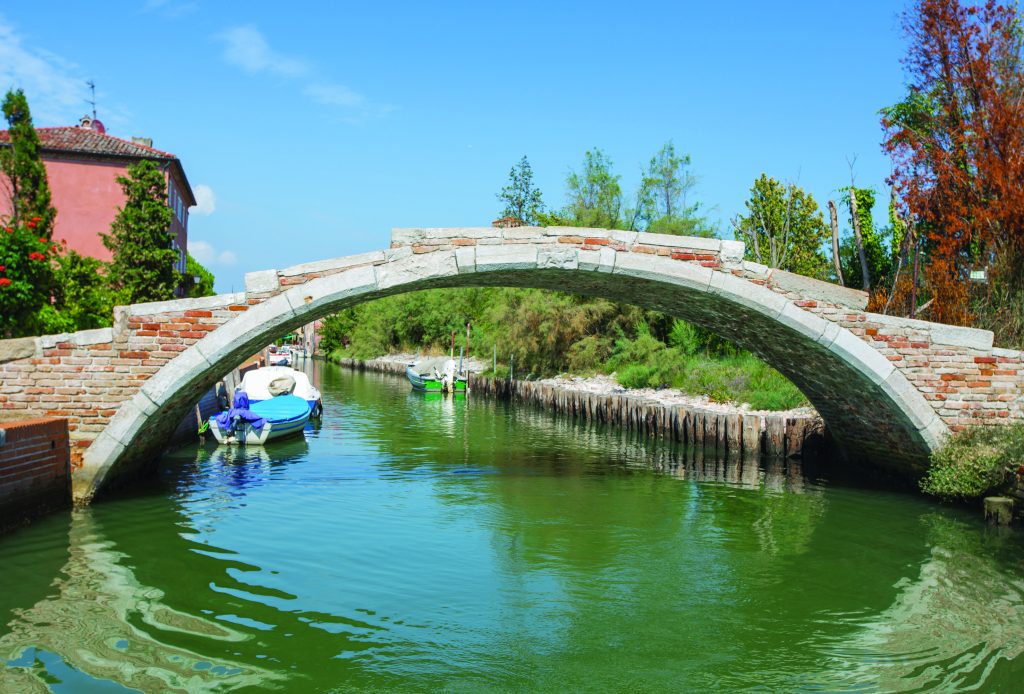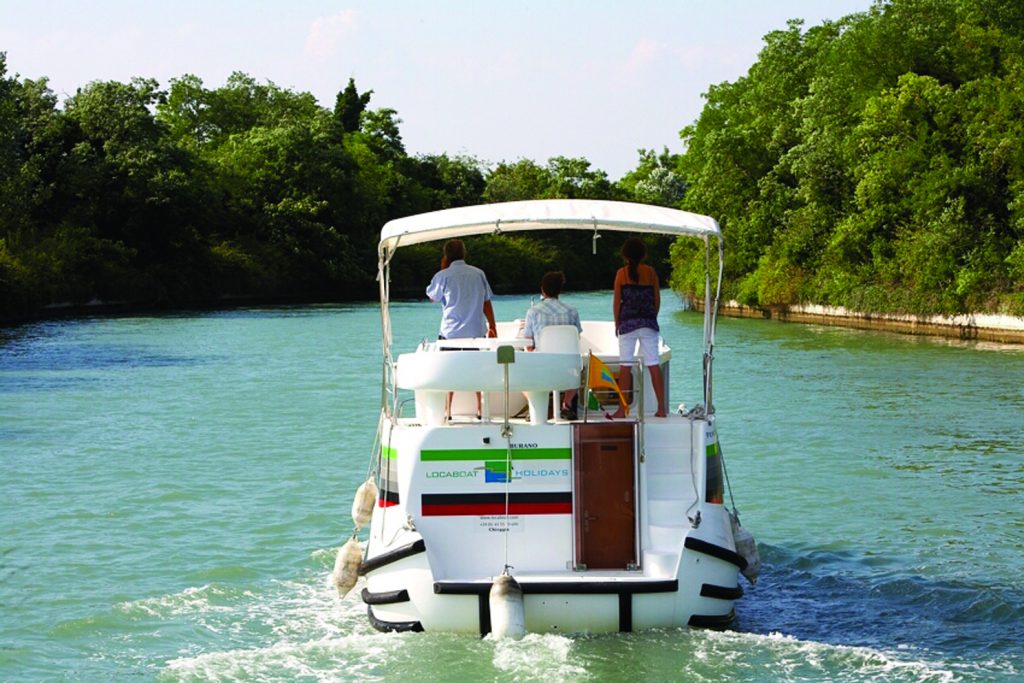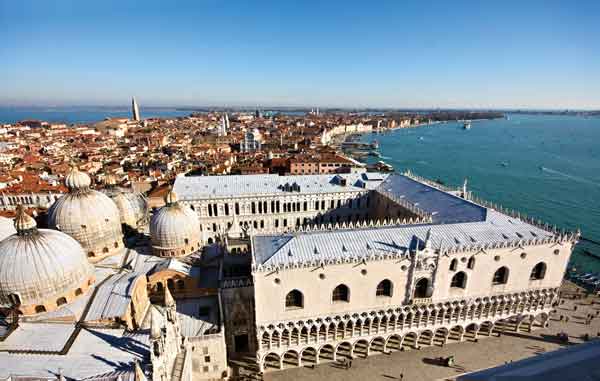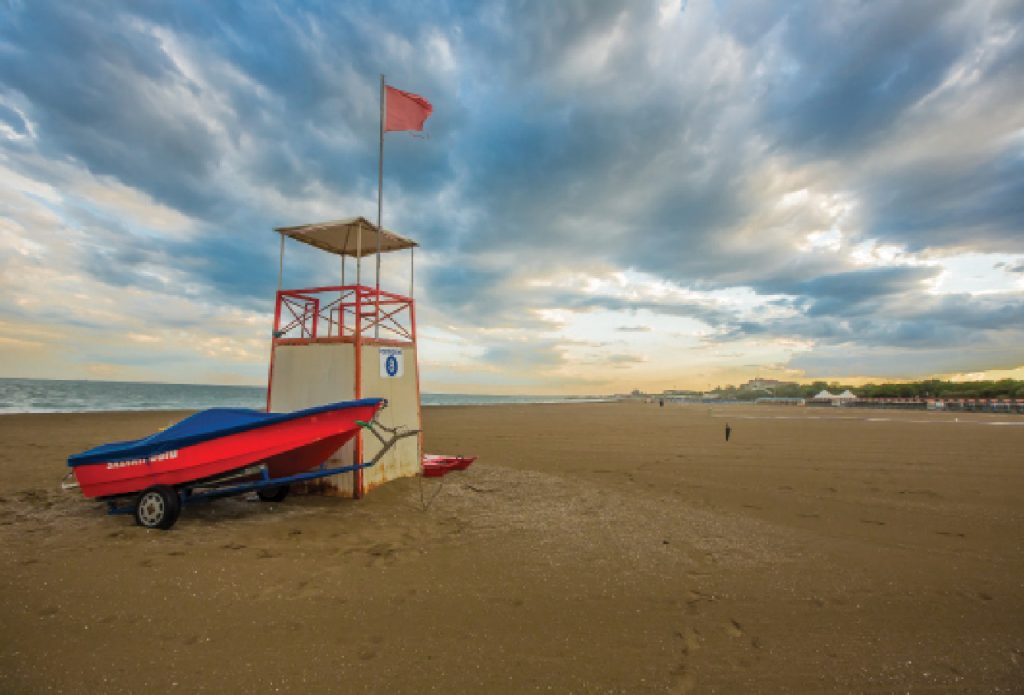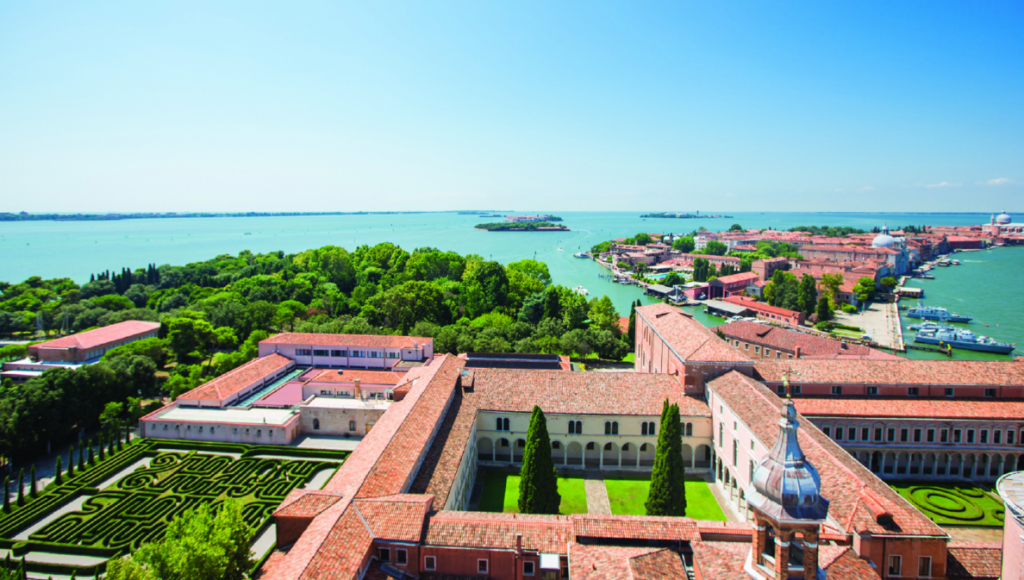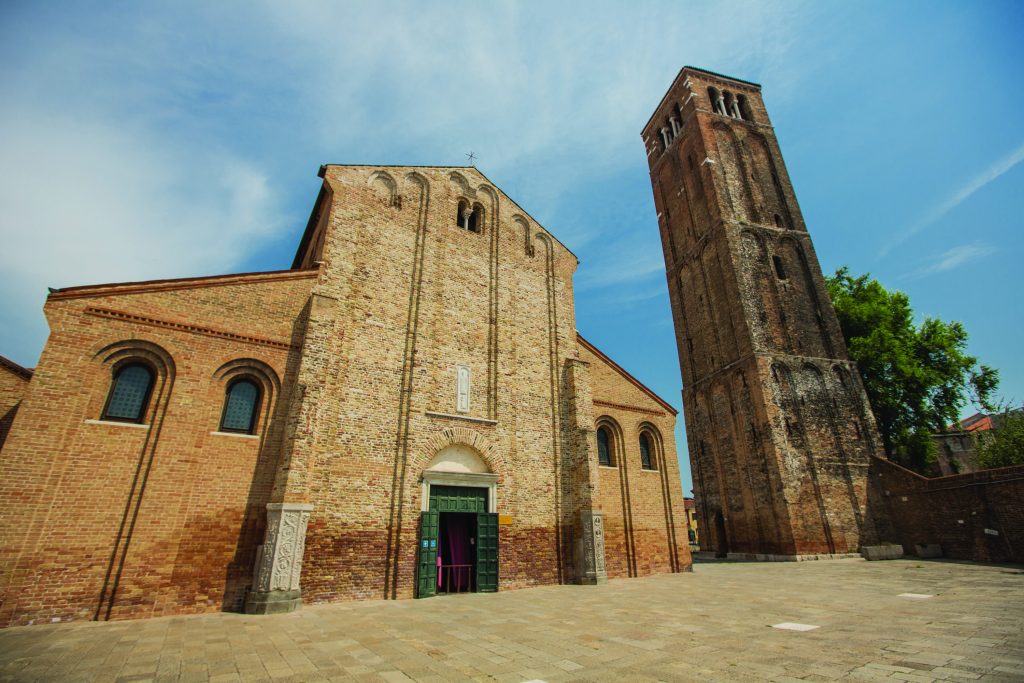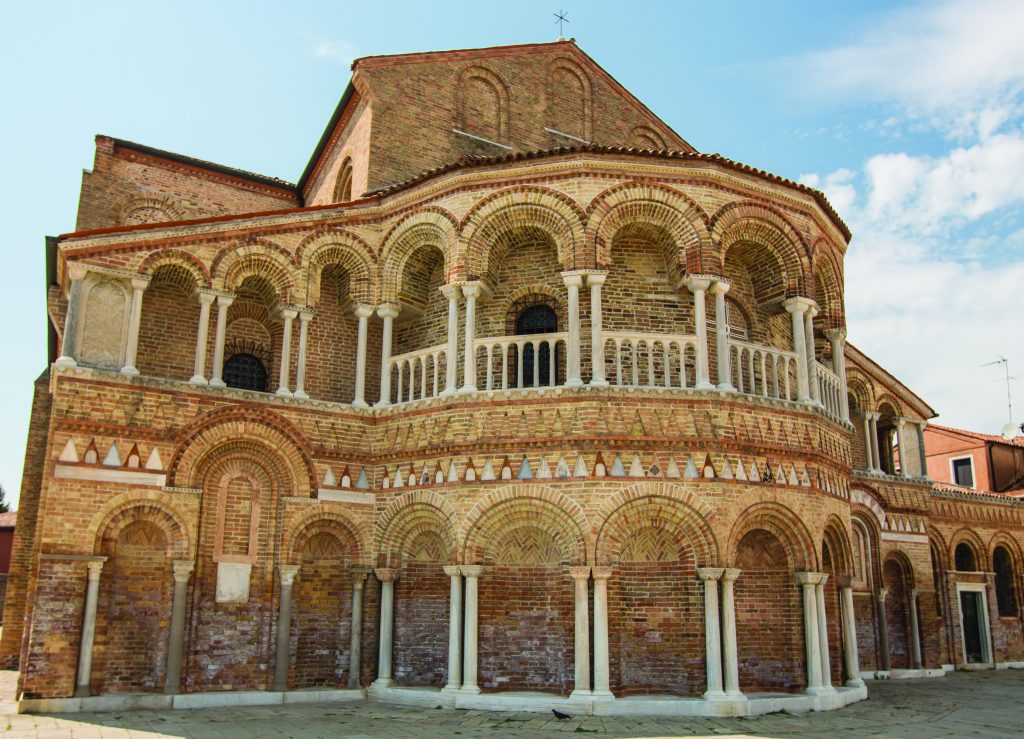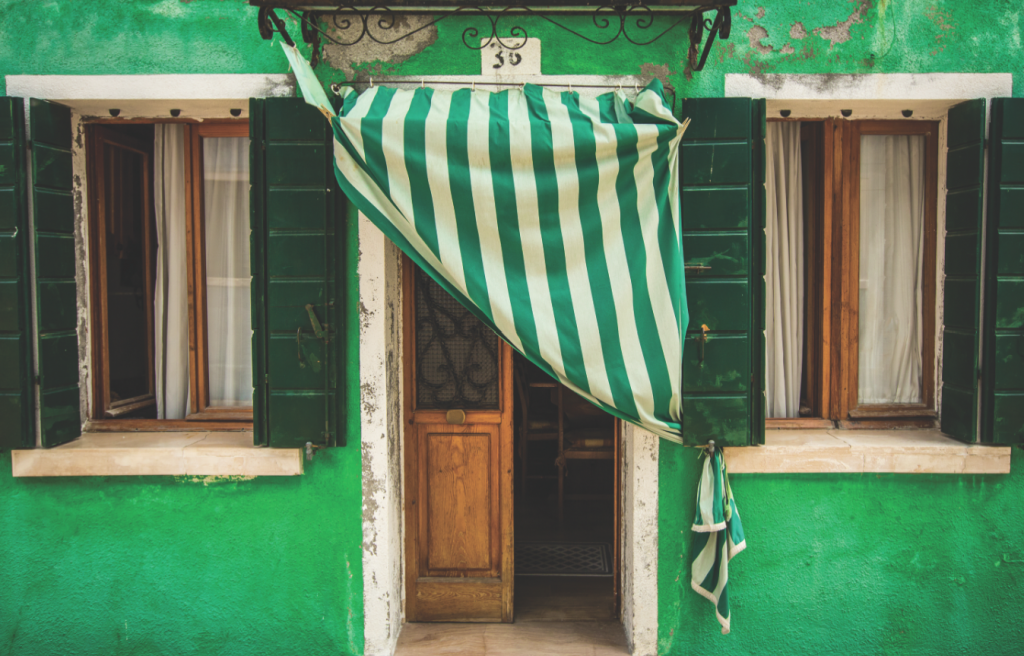Venice native Sara Scarpa takes us out of town on a long cycle ride from Lido to Pellestrina, and then on a boat trip to Murano, Burano and Torcello. This is an introduction to the beautiful Venetian Islands…
Visitors to Venice, especially those visiting for the first time, tend to associate the city with the main fish-shaped island in the Lagoon – Saint Mark’s Square, the Rialto Bridge and the canals filled with singing gondoliers… This is understandable, but Venice is much more than this, and even for returning visitors it is still full of surprises, many of which are hidden amongst the numerous islands within its Lagoon.
Most tourists tend to postpone the tour of the islands to the last few hours of their holiday, if time still allows it. Obviously, you cannot miss the main sights but, historically and geographically, it would make more sense to start by visiting the Venetian islands, as it is here that this unique and fascinating city originated.
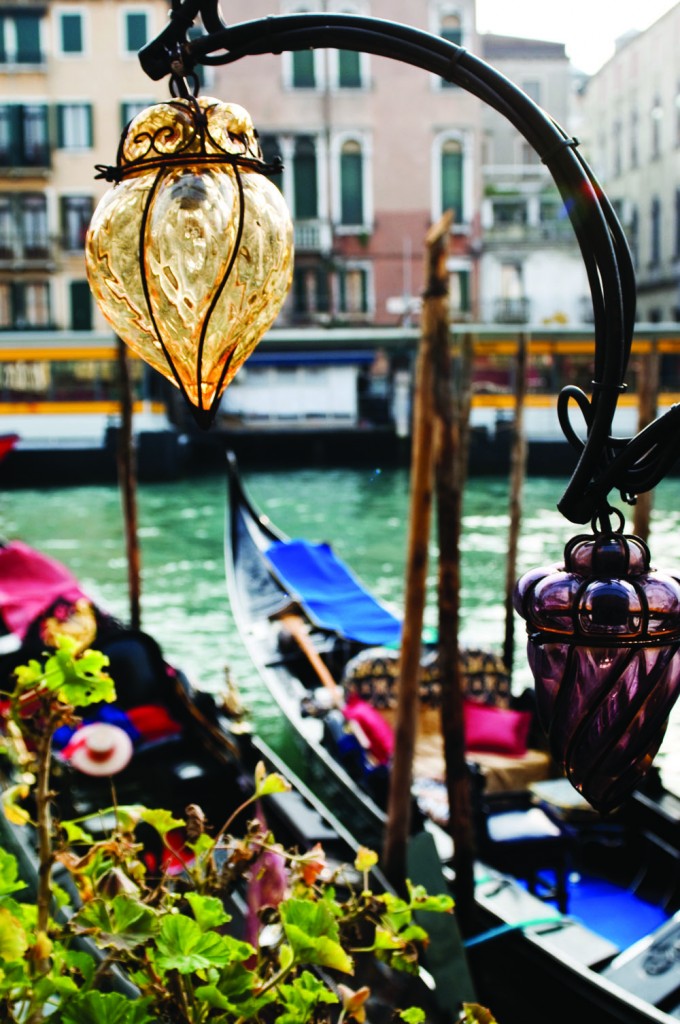
So, if you are planning your second trip to Venice, I would recommend you dedicate it to visiting some of the islands where the story began…
In the past, the many islands had several functions, from quarantine stations containing people with different illnesses (from mental problems to plague) to places welcoming religious communities, and monasteries.
Over the centuries, some of the islands have vanished in the water of the Lagoon (Ammiana, Costanziaca, etc.), some have been abandoned but many, in recent years, have been culturally and touristically recovered (San Clemente, San Servolo, l’Isola delle Rose, La Certosa, etc.). You will be spoilt for choice and, perhaps a bit overwhelmed, if you only have 48 hours.
You could, for example, visit the island of La Giudecca, starting with a visit to the stunning Palladian Church of the Most Holy Redeemer, then indulging in the food of Harry’s Dolci and, finally, relaxing at the stunning Hotel Cipriani. Or you could visit the nearby island of San Giorgio Maggiore, once a monastery, now the Giorgio Cini Foundation, with another one of Palladio’s greatest sacred works, with its intriguing maze and with the spectacular view over Venice from its campanile, which beats even the famous view you get from Saint Mark’s Tower.
Alternatively, you could opt to visit the “minor” islands, which are called “minor” as they are generally far from the familiar itineraries, more difficult to reach and less known – but certainly not less fascinating.
Amongst these, there is the peaceful island of San Francesco del Deserto (Saint Francis in the Desert), inhabited only by half a dozen monks, with its old monastery surrounded by cypresses, olive groves, linden trees and rose bushes. Or the ‘haunted’ island of Poveglia…Originally a plague quarantine station, the island was then used by Napoleon to store weapons; later, in the 20th century, it became a mental hospital, but it is now abandoned. Or the island of La Certosa, just in front of San Pietro di Castello, which had been abandoned for many years, has been recently recovered and nowadays hosts the Vento di Venezia boatyard and yacht marina, a nautical school and a hotel.
The choice of islands is vast. However, since I am advising for a weekend on the islands I will recommend only a few islands I love – easy to reach by public boats – and ones which I keep returning to every time I am in Venice.
Venetian Island #1
Lido Di Venezia
My list of favourites could not possibly start with any other island than Lido. It is here that I was born and have spent most of my life. This 11km-long sandbar, which shelters Venice from the Adriatic Sea, is generally famous only for the movie festival that takes place here every year from the end of August to the first week of September. However, the island offers so much more. It is the perfect spot for a relaxing holiday, away from the crowds, if you are visiting Venice during spring or summer and if you like cycling or sunbathing.
Do not expect the crystal-clear blue sea that you find in Sicily or Sardinia, though the beaches are quite pleasant and ideal for families with children. Also, the architecture typical of Lido is fascinating – Liberty-style and Art Deco blend with Venetian tradition and with unusual decorations from completely different styles to create spectacular architectural features and magnificent houses.
I love cycling the length of the island, starting at San Nicolò and finishing at Alberoni, passing what remains of the once prestigious Hotel Des Bains, the Lungomare Marconi, the Palazzo del Cinema and the Moorish Hotel Excelsior.
Then, following a narrow path at the end of the Lungomare Marconi, I cycle along the Murazzi. Here it is just so peaceful – surrounded by water, with a view of the Adriatic and so close to the Lagoon, you can really sense the detachment from the hustle and bustle of the crowded St Mark’s Square. This feeling becomes even stronger when I get closer to the end of the Murazzi, where my mobile signal always fails. I feel like there is just me, the sea, Venice and the rocks trying to shelter and preserve it, forever suspended between sky and water, in its fairytale atmosphere.
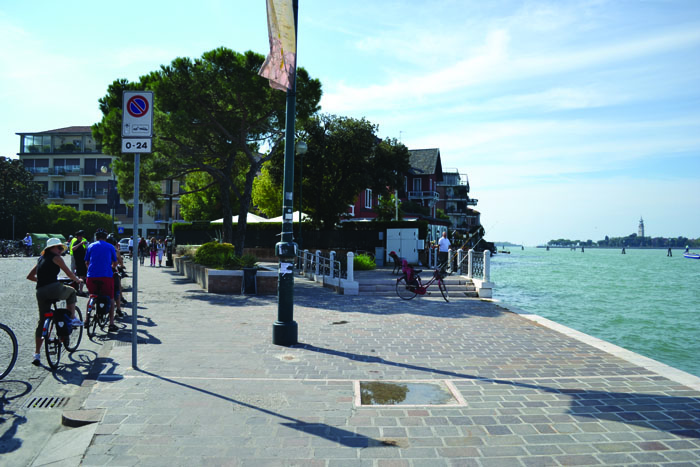
On the way to Alberoni, a protected natural reserve the beauty of which was immortalised in the poems of Byron and Goethe, I always love to make a pit-stop in the tranquil Malamocco, where time seems to have stopped. Here you must pay a visit to Trattoria Al Ponte di Borgo, with fresh cicchetti (typical snacks) prepared every day and local wines galore – so be warned that it may be some time before you get back on your bike!
A few times, with my friends and fiancé, I have ventured to cycle all the way to Faro Rocchetta, the western tip of Lido, and got on the public ferry to Santa Maria del Mare. From here, we have cycled for 11 more kilometres and followed the Murazzi until we reach Pellestrina. This characteristic island is something different. Just imagine going back in time. Here, they are all locals, mainly fishermen, with the boats moored in front of their houses.
The island seems suspended in time – in the summer people leave their doors open during the day (although nowadays, unfortunately, this is less common) and sit outside chatting to friends and neighbours. The calli, the small squares and the courtyards are the centre of the village activities which seem to have disappeared elsewhere.
On occasions we have ventured even further and got a boat from Ca’ Roman to Chioggia. Chioggia is not an island but it still preserves the atmosphere typical of local villages. It is almost like a miniature version of Venice, starting from the first small square with a column with a very small lion on top that the Venetians like to ironically call “the cat”! Known for its fish market and pretty centre, Chioggia is definitely worth a visit.
Venetian Island #2
Murano
This island is famous the world over for its glass production. It is definitely worth visiting one of the famous factories to see the glass artists creating stunning works of art. They are so good at it that they make the process look so easy but, as you can imagine, it requires skills and many years of experience and different people working together just to create one piece. I was lucky enough to recently visit the Linea Mazzuccato factory. Even though I have observed the process of glass-making numerous times I am always touched by the skills of the master glass-bower and the respect he commands from his apprentices.
If you are in Murano you must pay a visit to the church of Santa Maria e San Donato to admire its exquisite 12th-century Byzantine mosaics. It also contains the relics of St Donato and the big bones of the dragon slain by the saint in Greece.
Not far from the Venier boat stop you can see the exterior of another church, Santa Maria degli Angeli, which I have mentioned in my previous articles, as in the adjacent former convent is where the two nuns, Caterina Capretta and the noble woman M.M. stayed, with whom Casanova had his famous love affair. The Venetian seducer used to come here often for Sunday Mass just to spend some time with his lovers! The church is usually closed so if you want to visit the interior you need to ask for an appointment.
Venetian Island #3
Burano
You might have heard of Burano before and, surely, you must have come across photos of the many brightly coloured houses that confer to the island its distinctiveness and its nickname. The “Painters’ Island” with its rainbow of coloured houses, hanging laundry and reflections on the canals, is a paradise for painters and photographers. It is a great place to escape from the hordes of tourists that crowd Venice in the summer and to cheer you up from the grey sky in the winter. Burano is one of the main Venetian islands in the northern lagoon, not far from Murano, easily reachable with a public boat from the Fondamente Nuove. Here you can find a calm and intimate atmosphere. The main square, Campo Baldassarre Galuppi, takes its name from the famous local musician whose statue dominates in the centre. In the campo you will also find the Museum of Lace and the Church of San Martino, which is definitely worth a visit just to admire Tiepolo’s Crucifixion.
In the past centuries Burano has been surviving mainly thanks to fishing and to lace-making. This complicated art became so popular that in the 17th century the women of Burano who embroidered lace were called to work in France.
The beginnings of this art go back centuries and its origin is linked to a fascinating legend. They say that one day a fisherman who was out sailing heard the singing of the mermaids but because he was so much in love with his fiancée he resisted their charm. The Queen of the Mermaids was so impressed with his loyalty to his fiancée that she created for him a gift with the movement of her tail – a beautiful nuptial veil made out of the sea foam. At the fisherman’s wedding, when the other women in Burano saw the veil his bride was wearing, they were so impressed with its beauty that they kept trying to reproduce it with their lace-making. What a romantic story!
Venetian Island #4
Torcello
Very close to Burano is the pretty island of Torcello. Founded in the 5th century, Torcello was the first Venetian island to be inhabited. It once had a population of around 20,000 but today, after many centuries, there are fewer than ten people living on the island!
In the Cathedral of Santa Maria dell’Assunta you can admire the stunning Byzantine mosaics from the 11th to 13th centuries. The most impressive is certainly the mosaic of the Last Judgement. The lower part of the mosaic is quite threatening and reminds us of Dante’s Inferno – the representation of the punishment for the seven capital sins, red flames, devils, hands, bones and countless skulls with big worms coming out from their eye sockets. The mosaic is there to look at you on your way out from the church, as reminder that you must behave!

